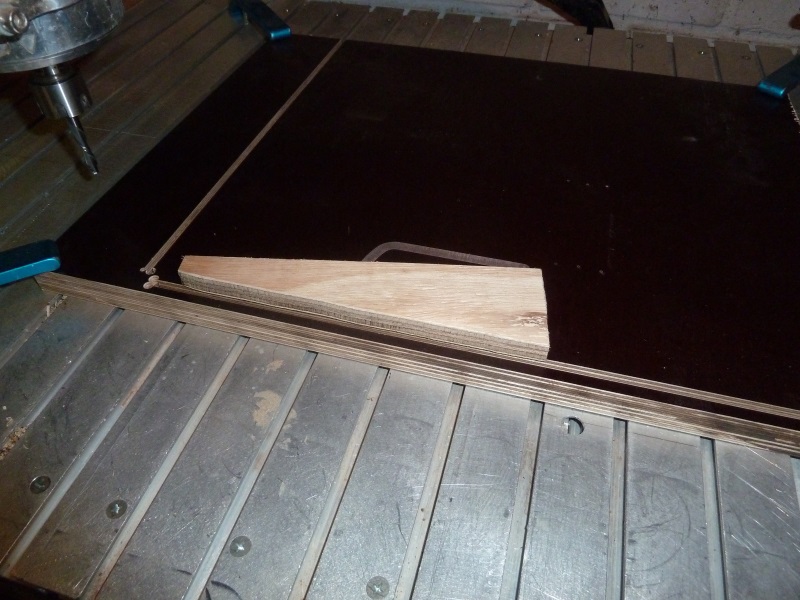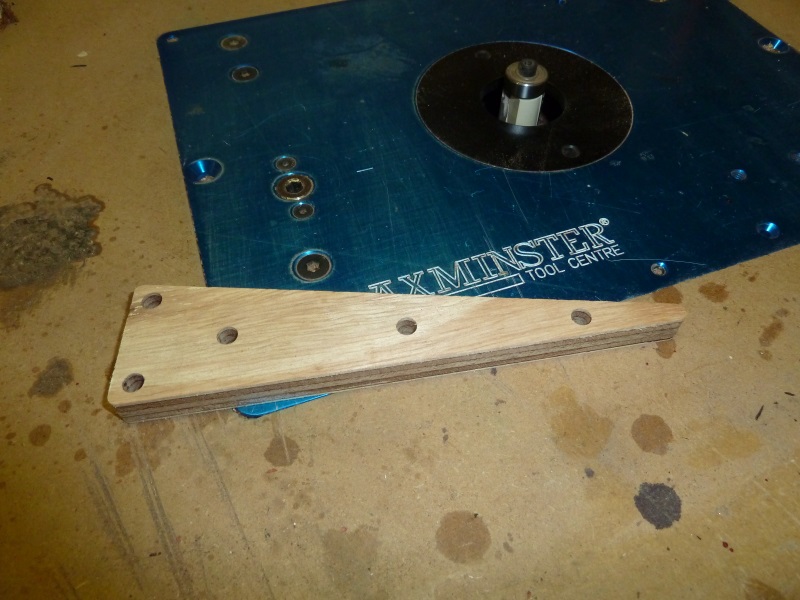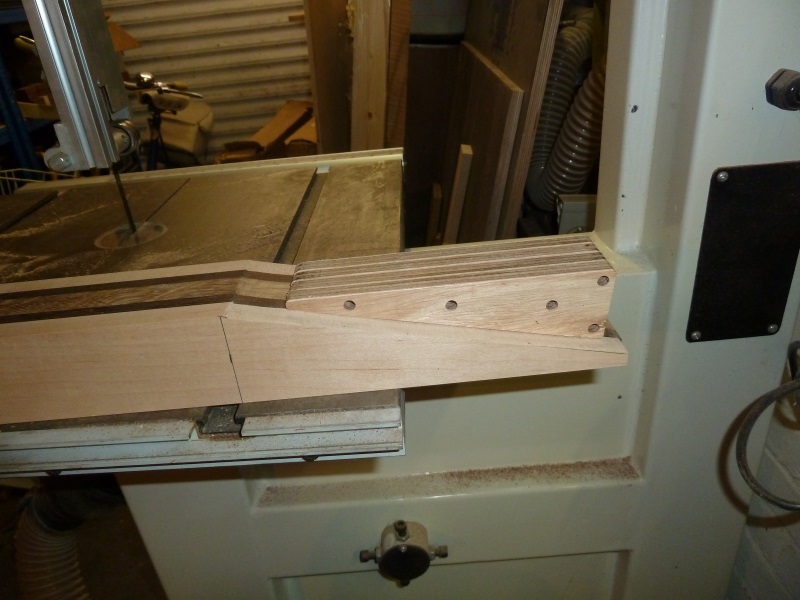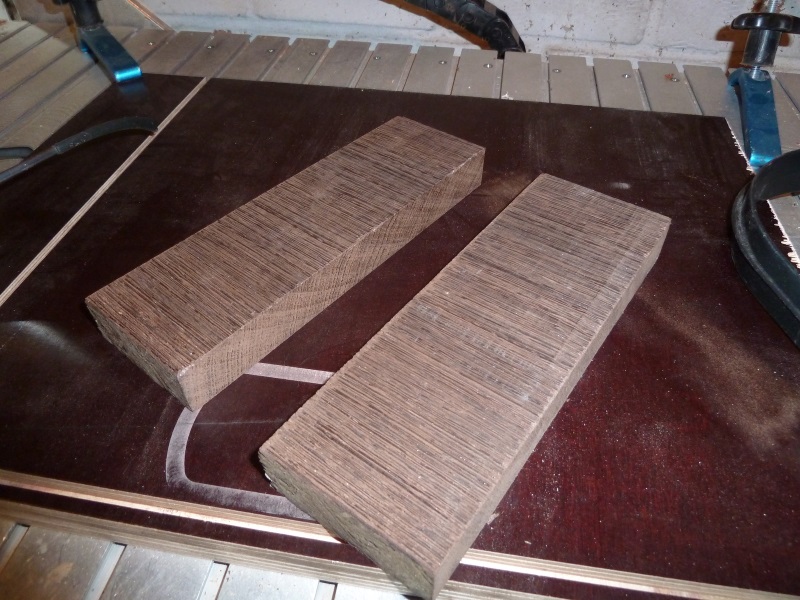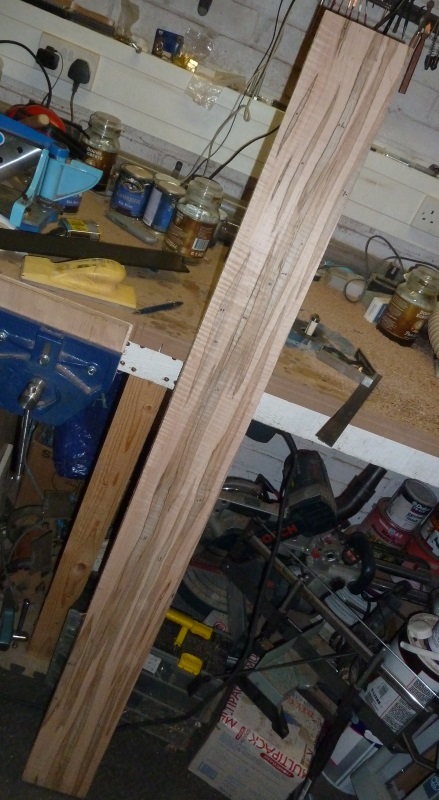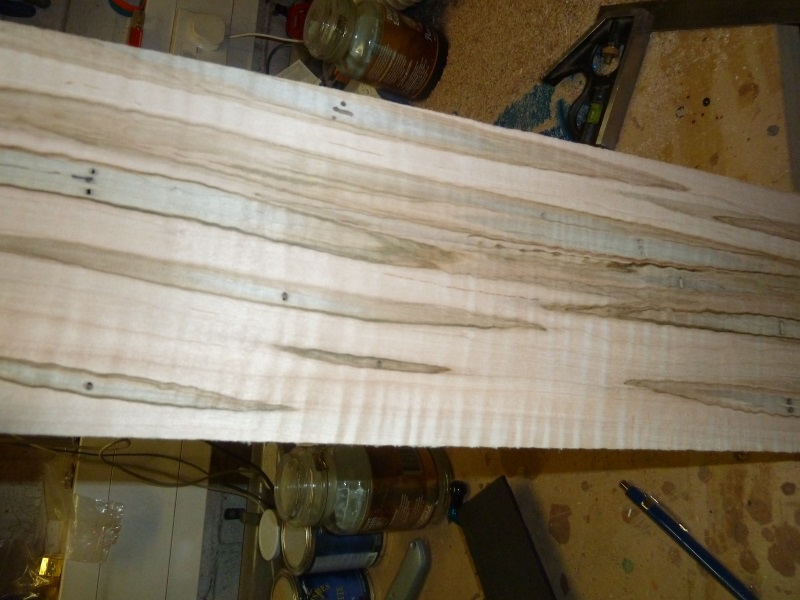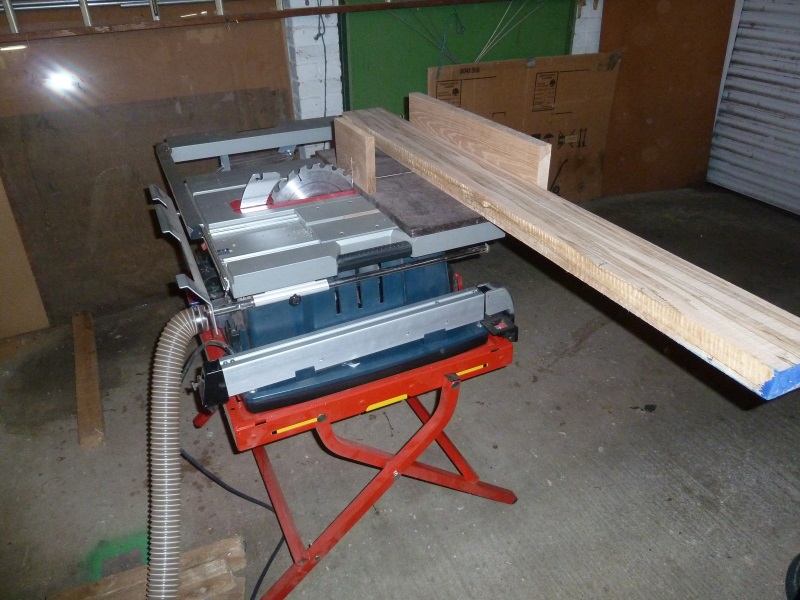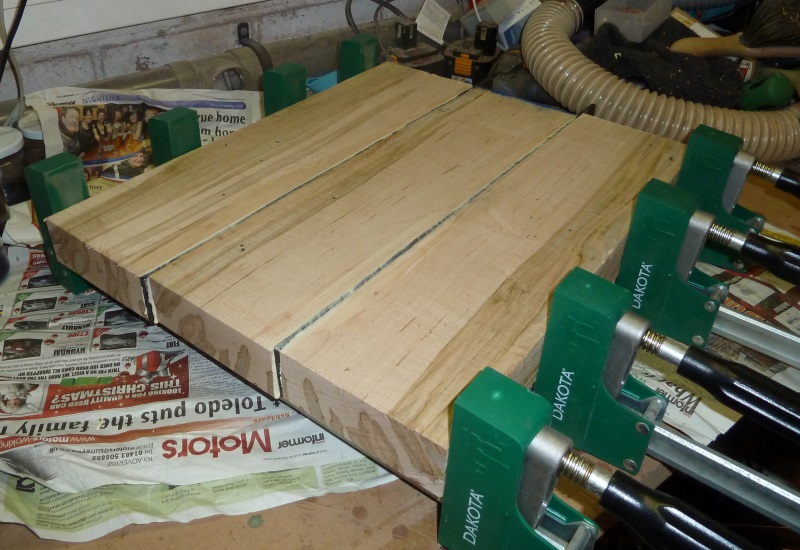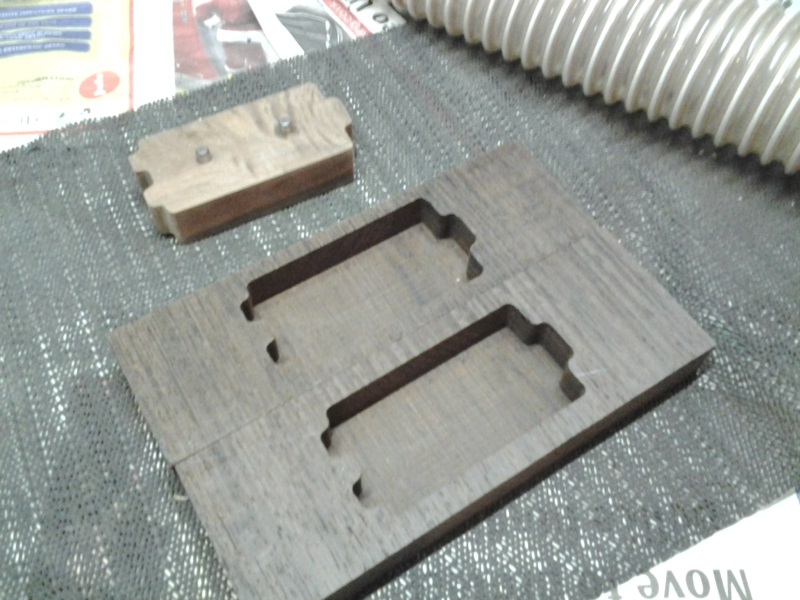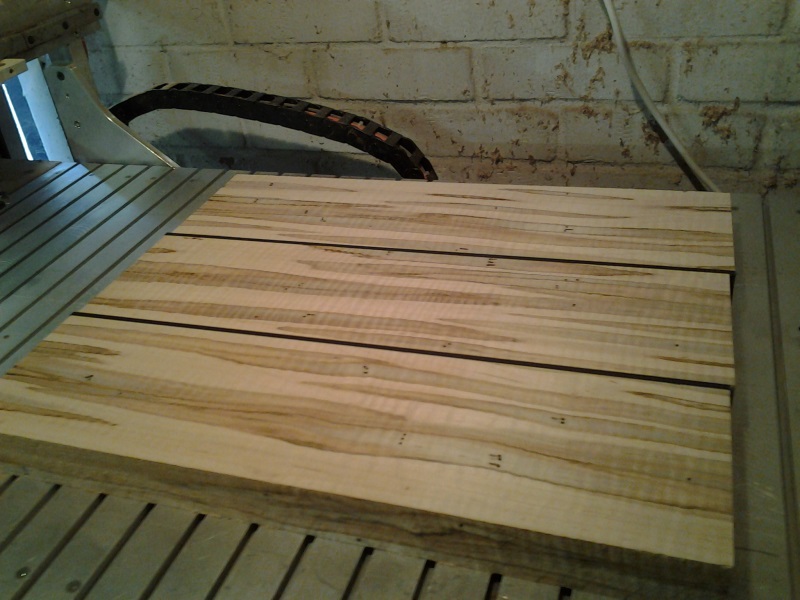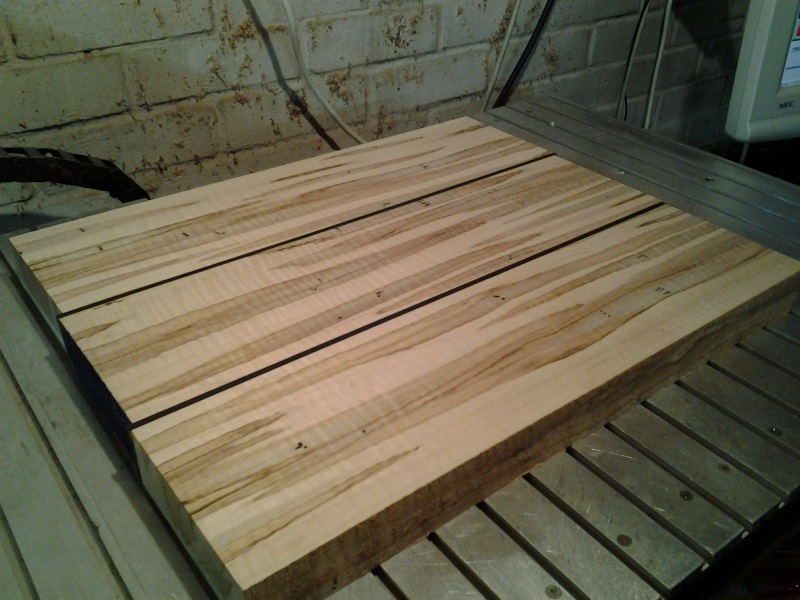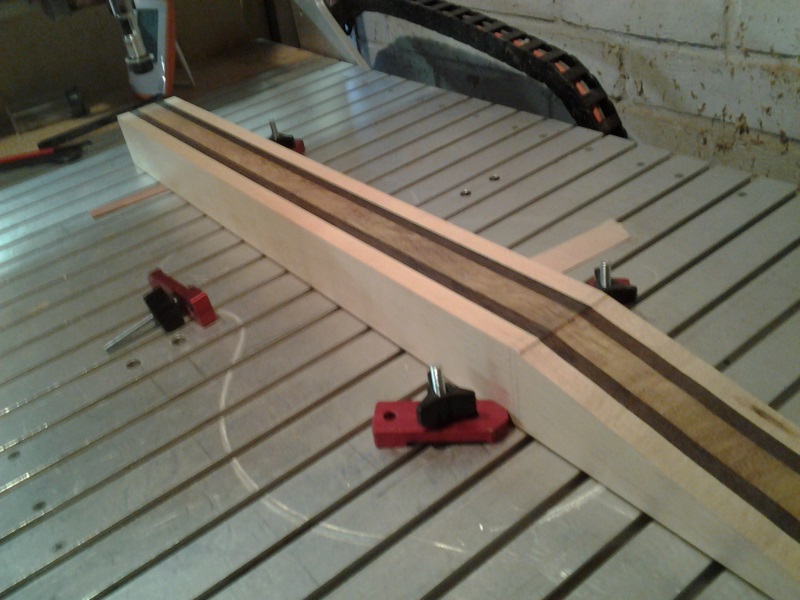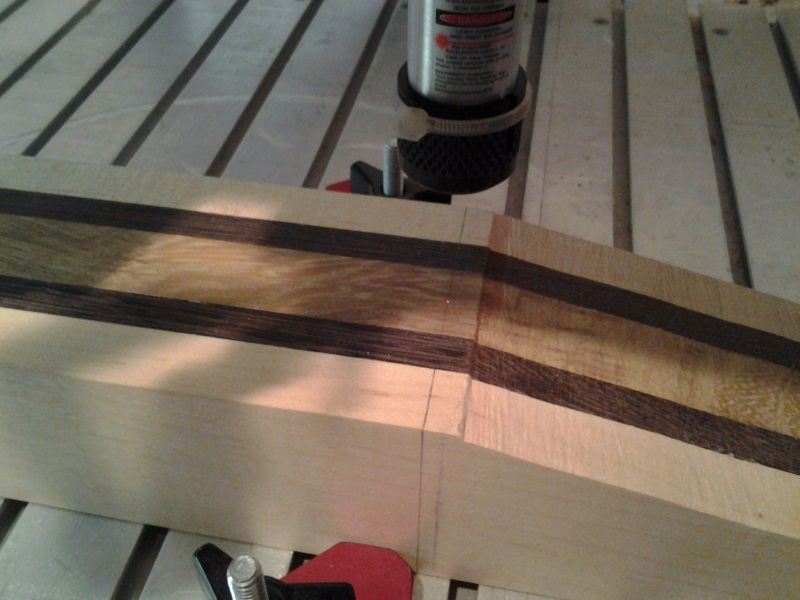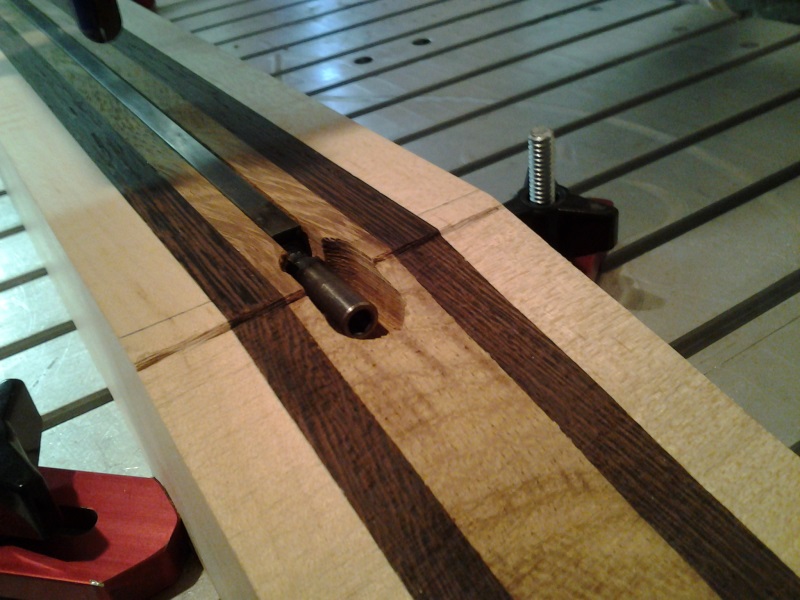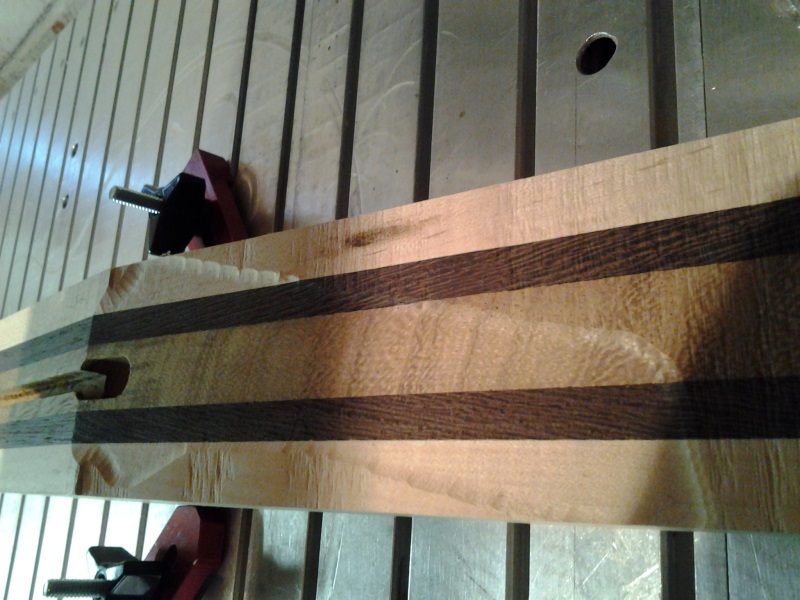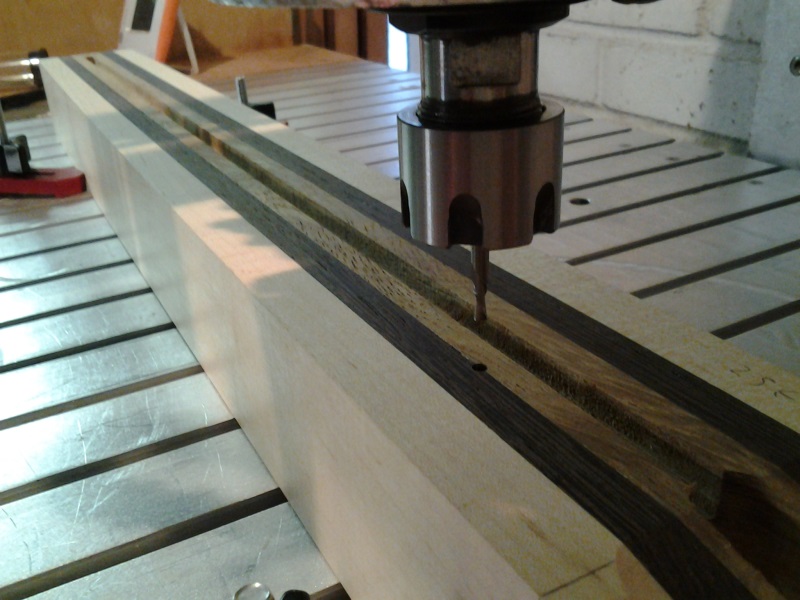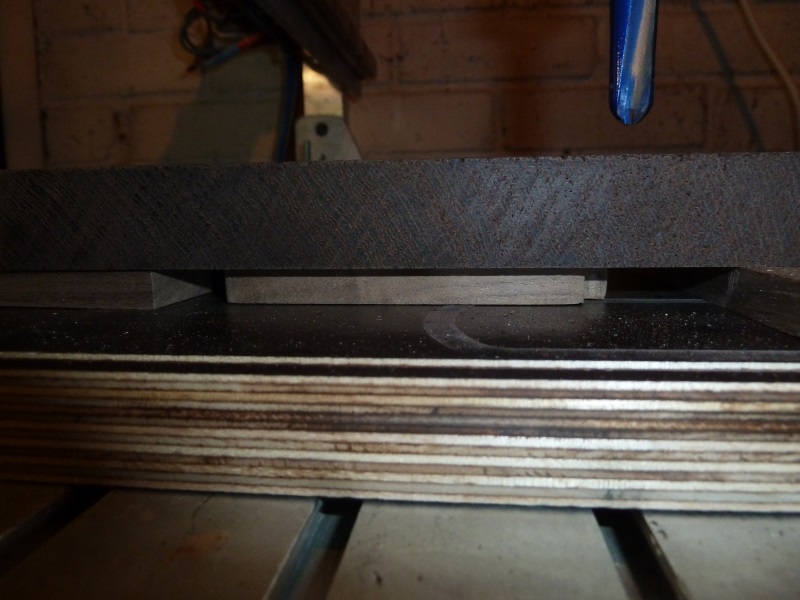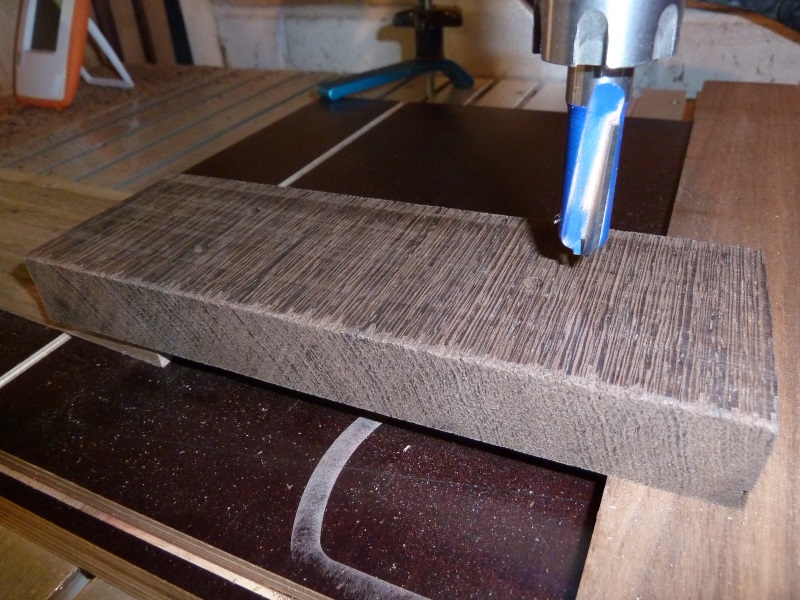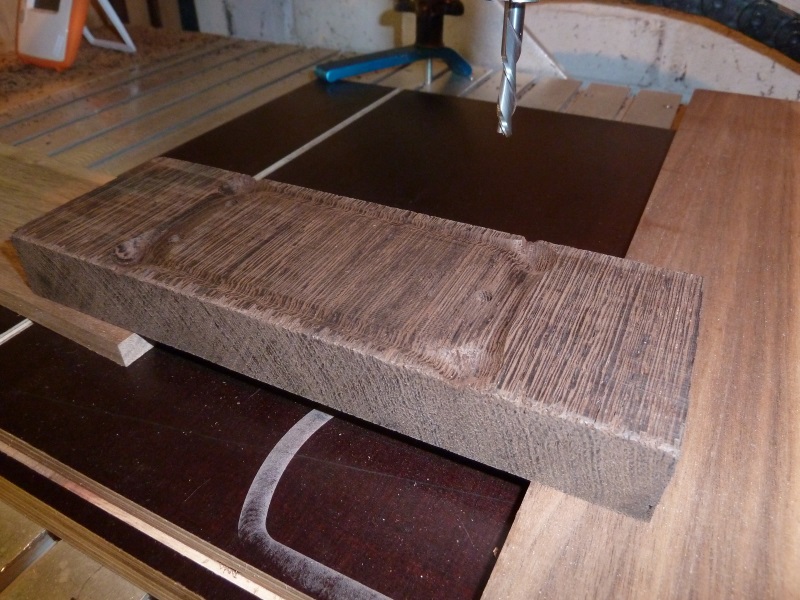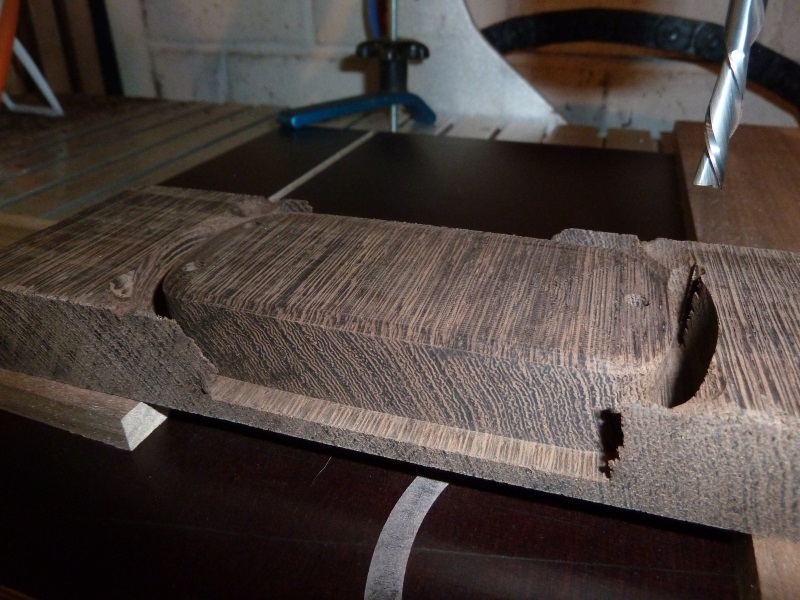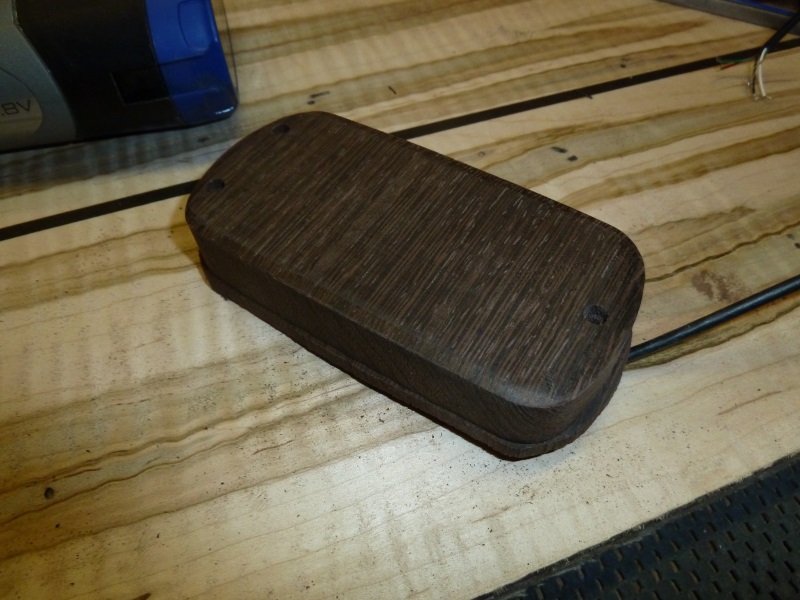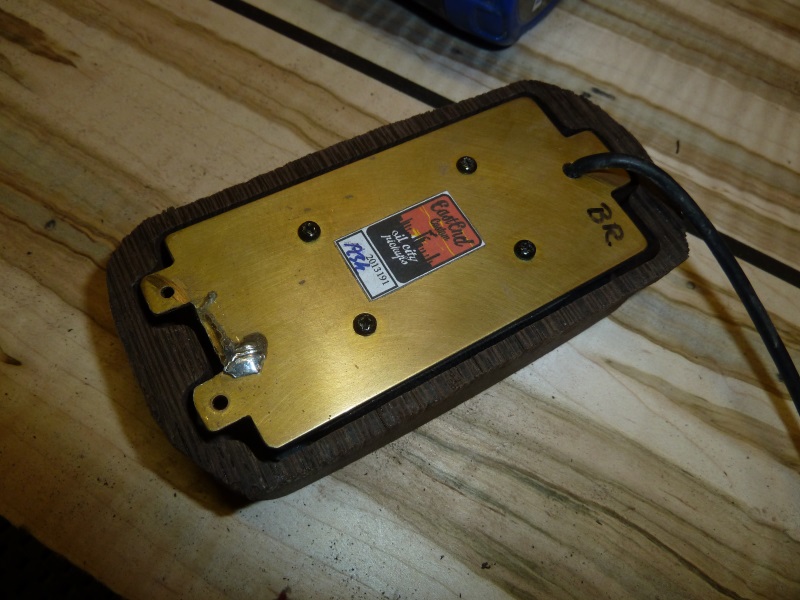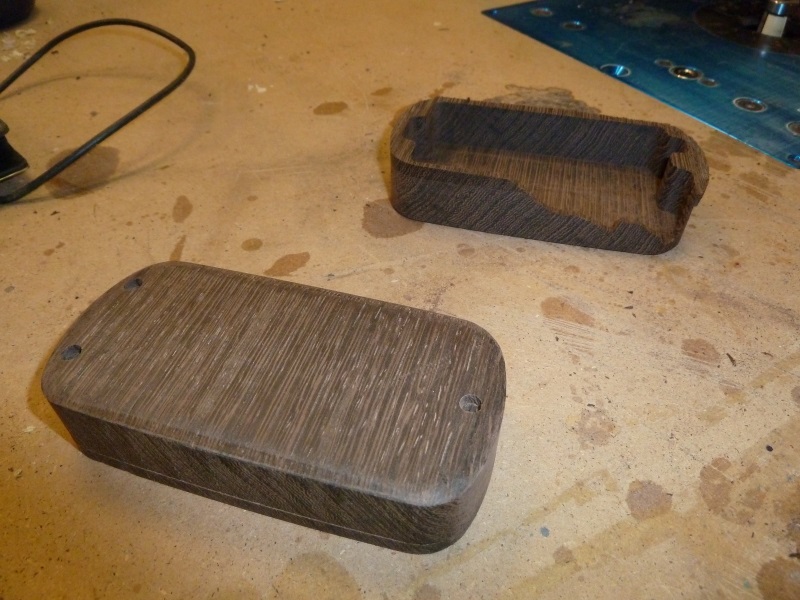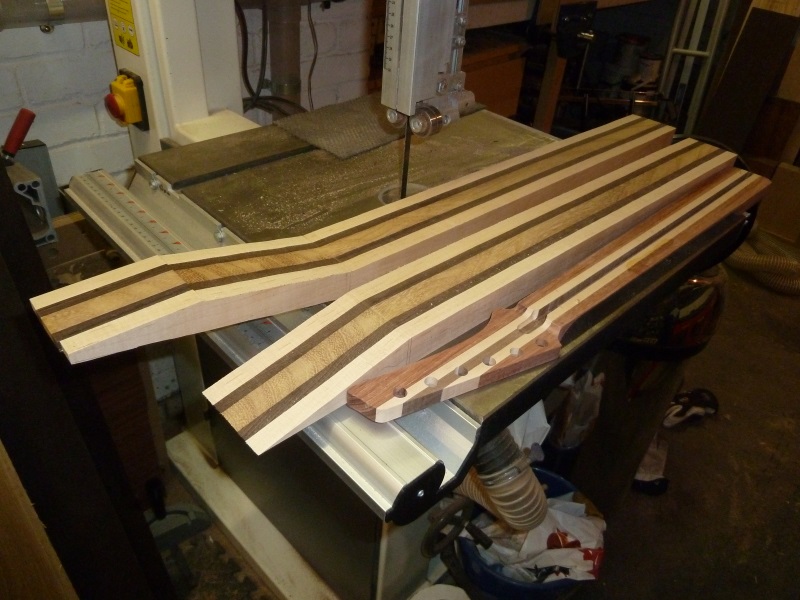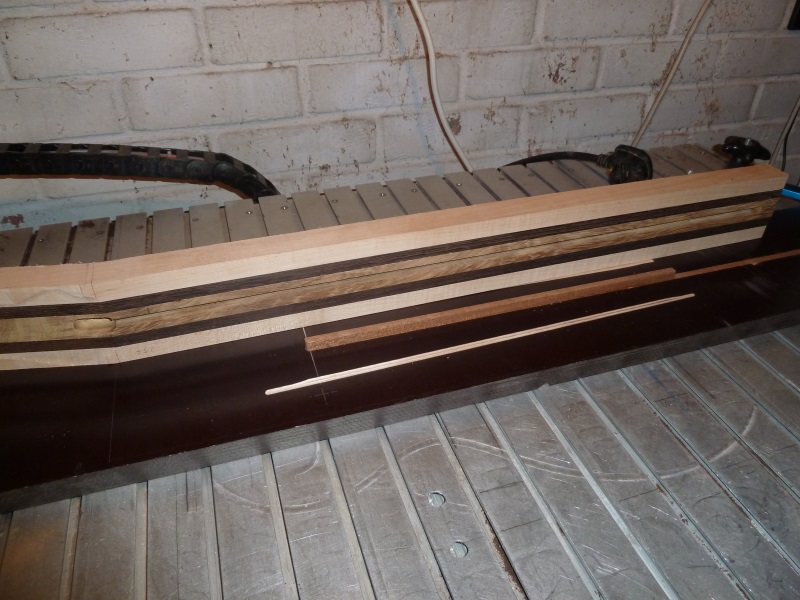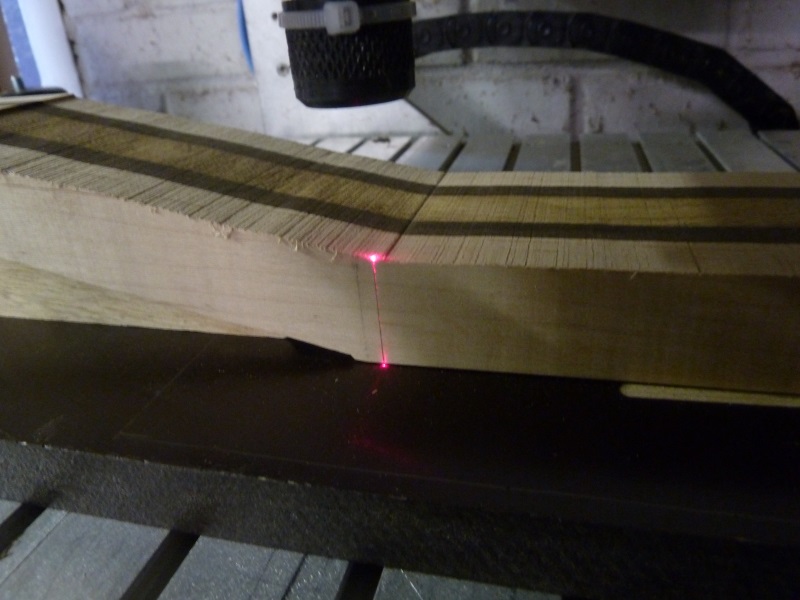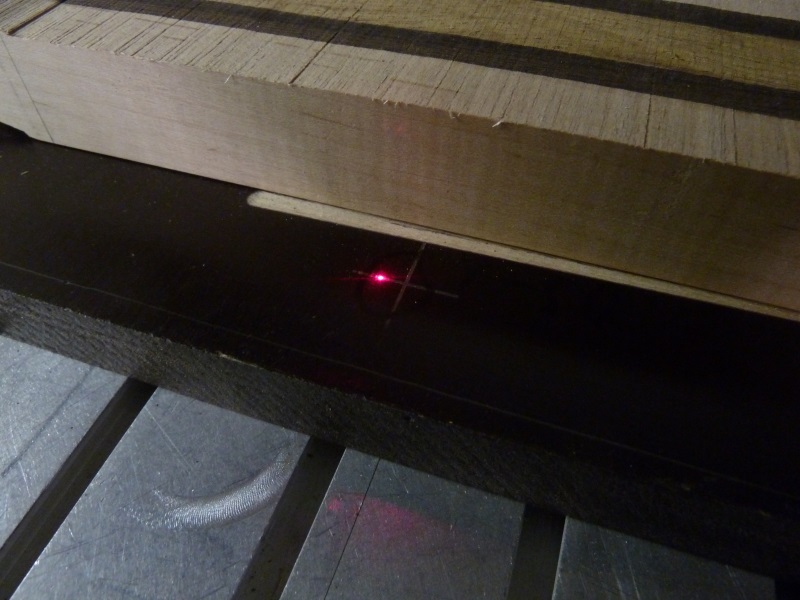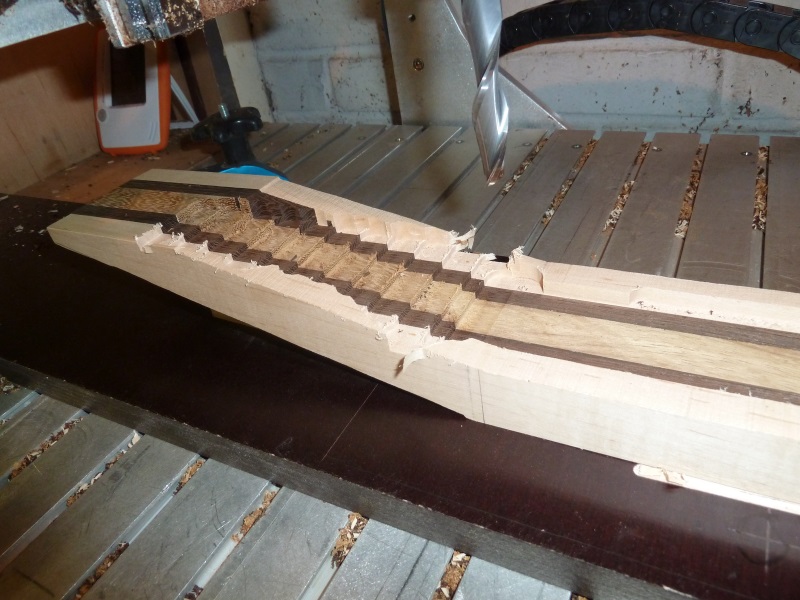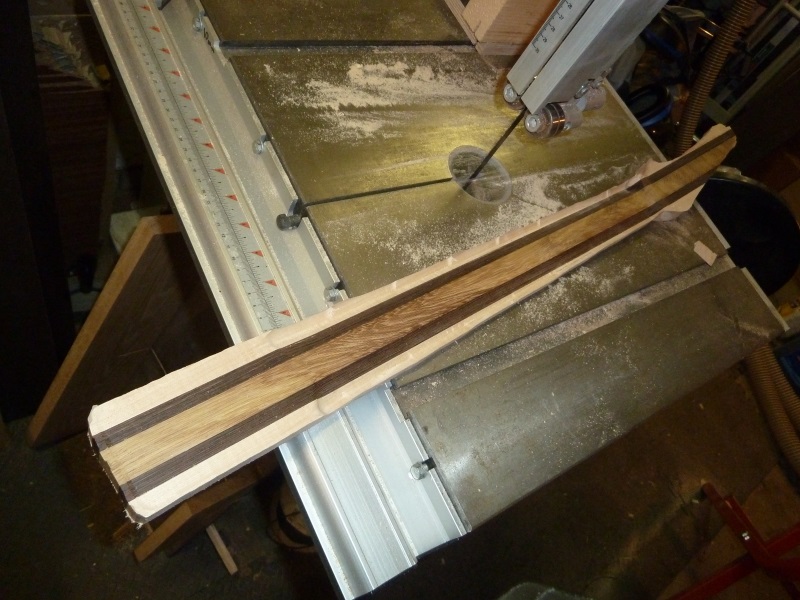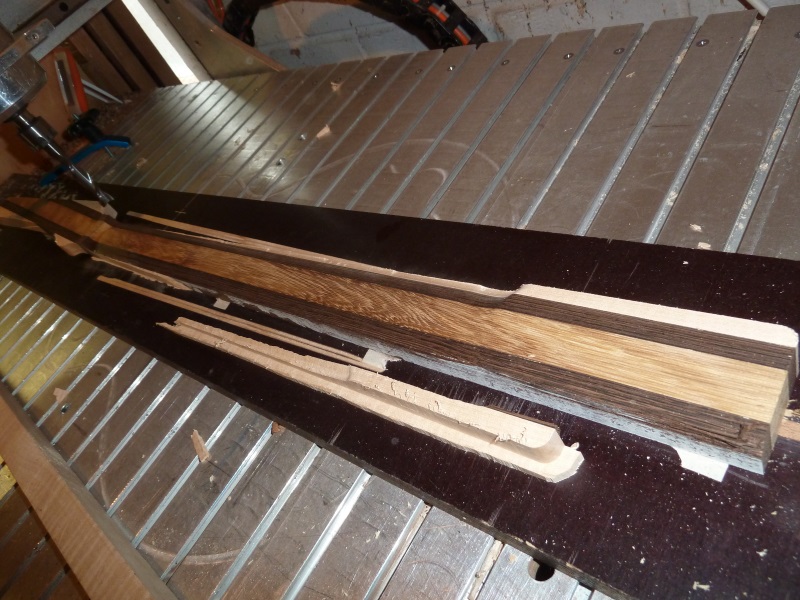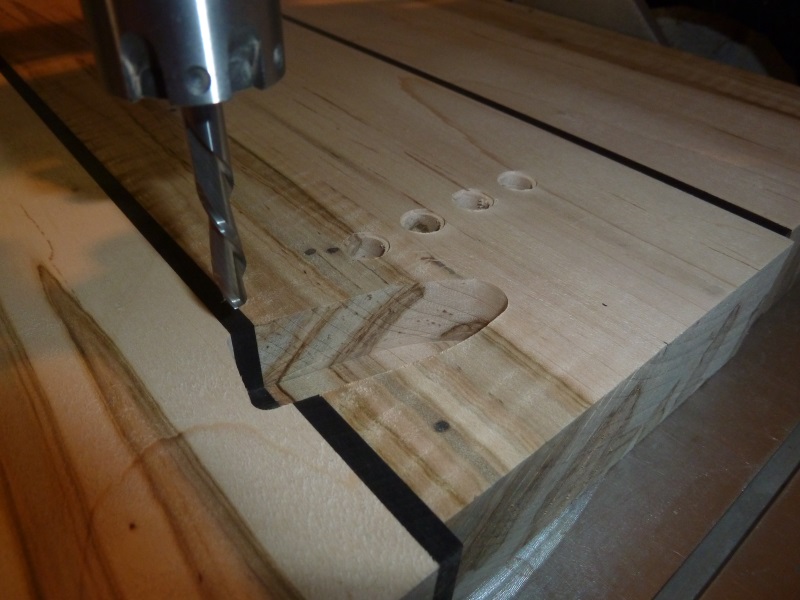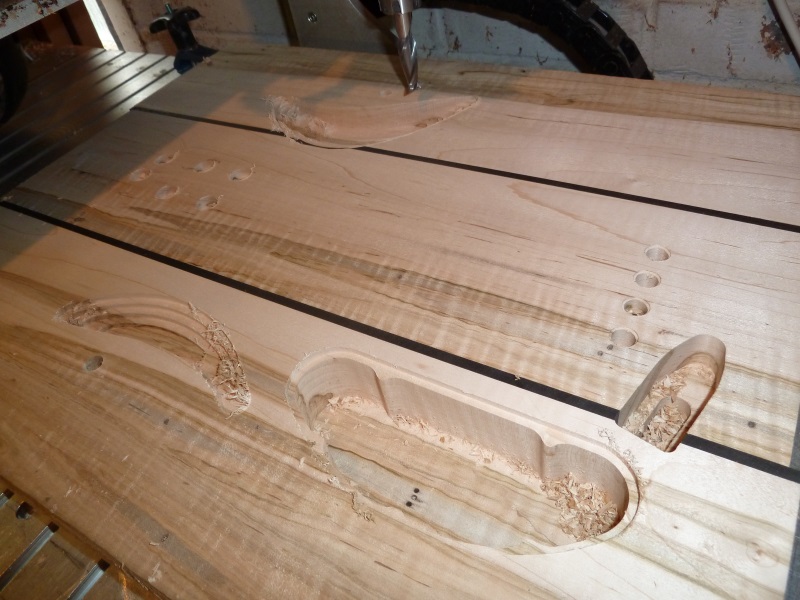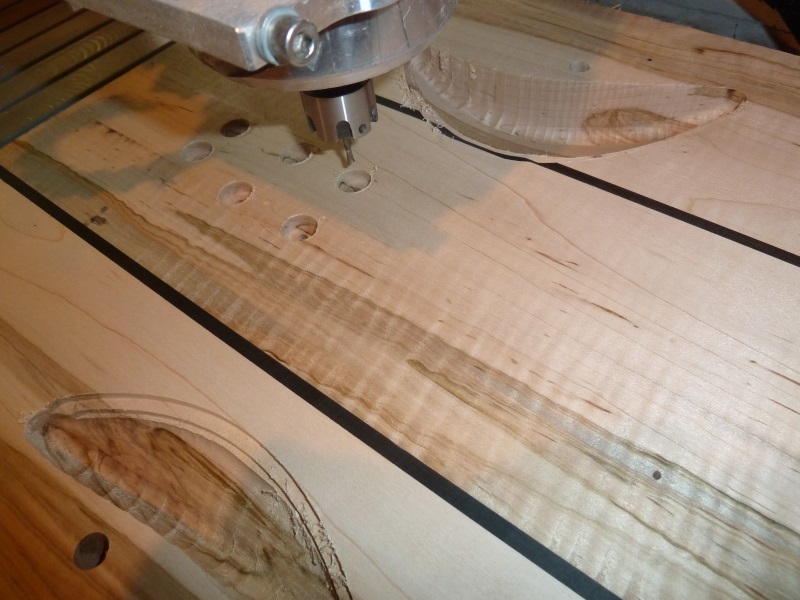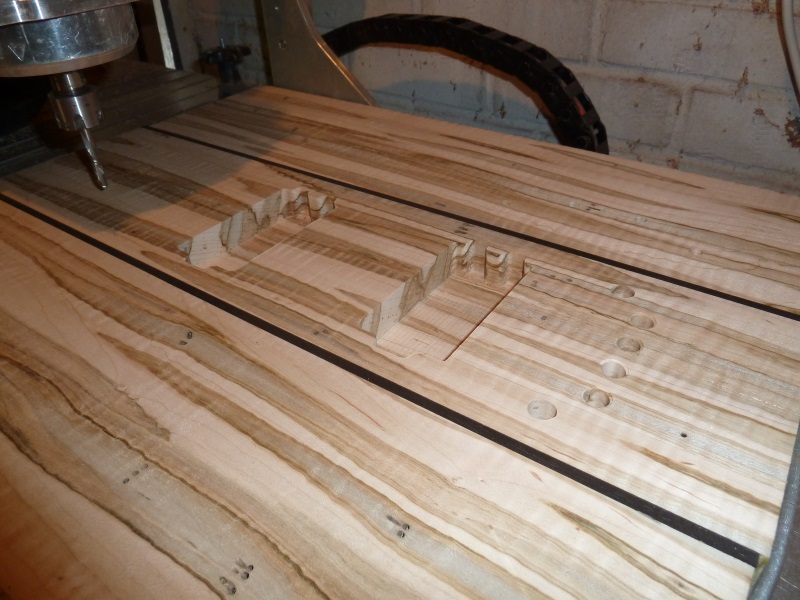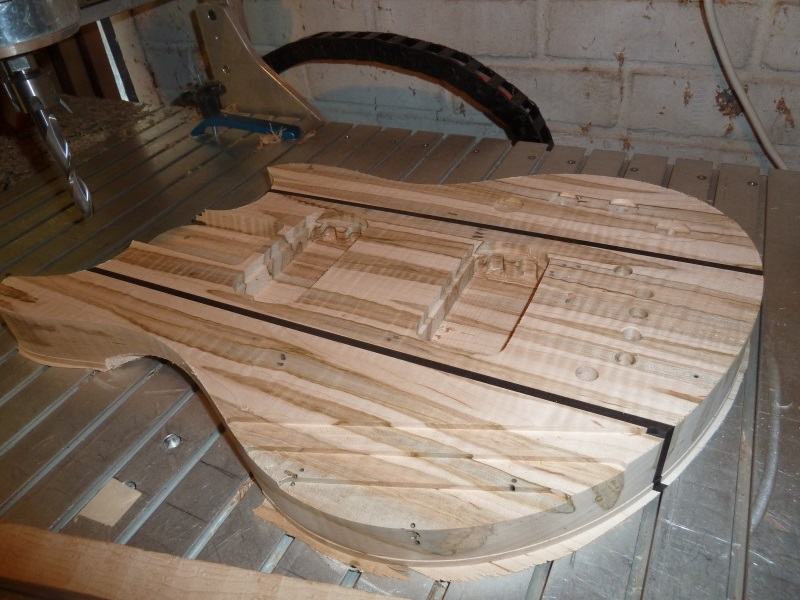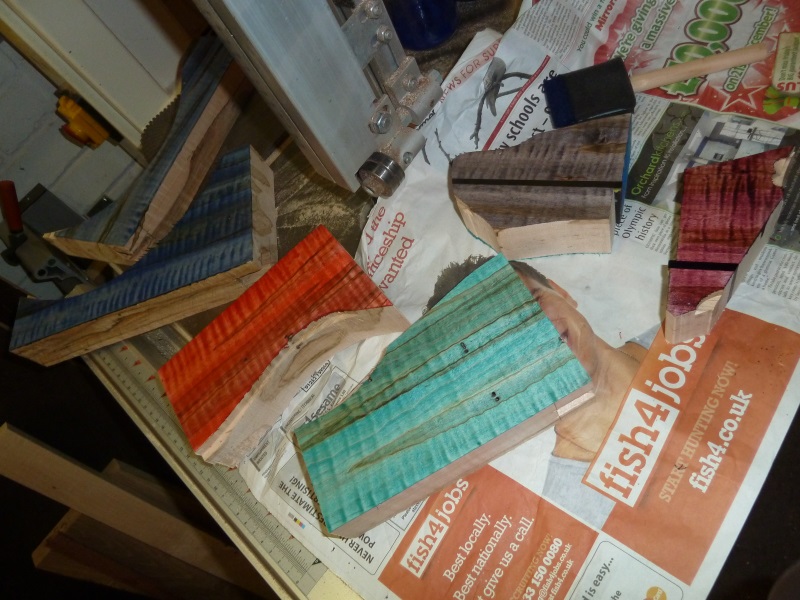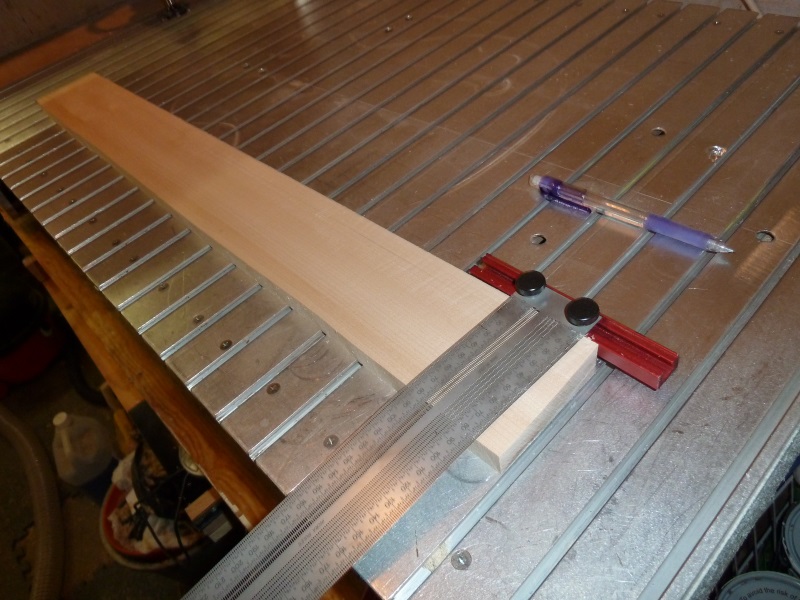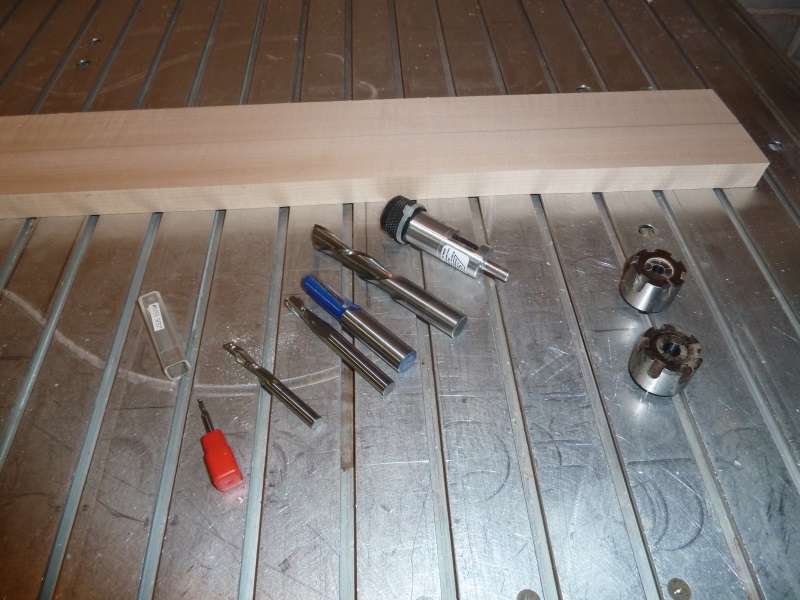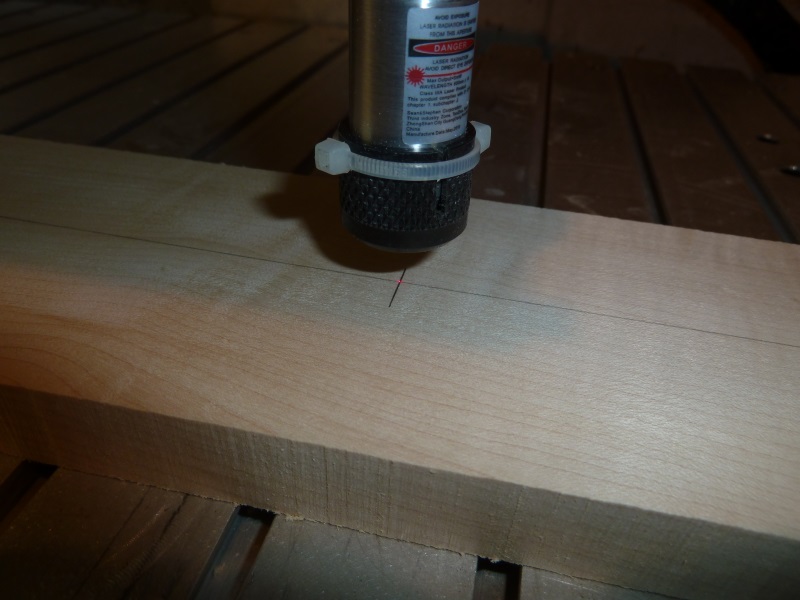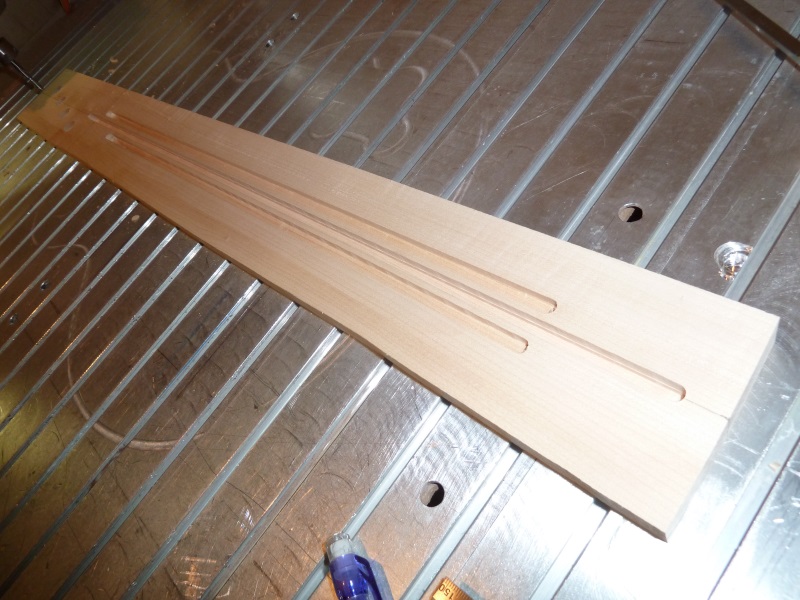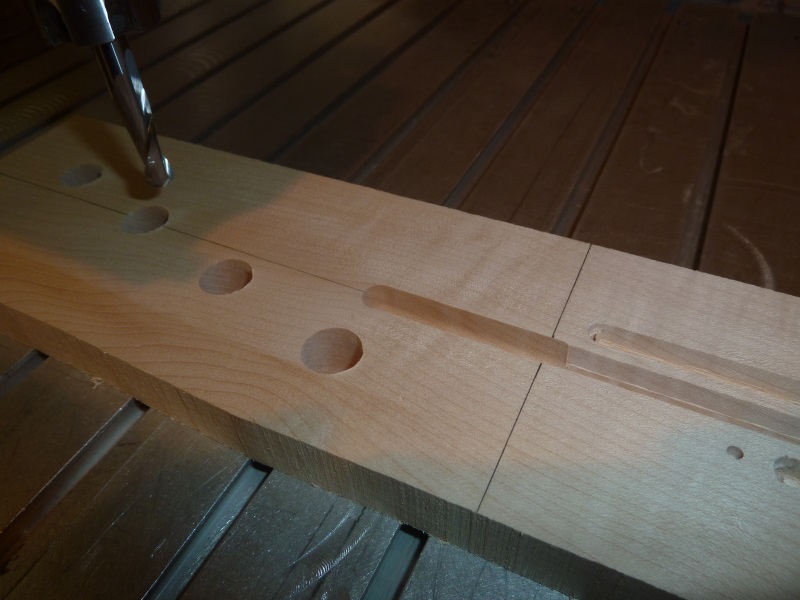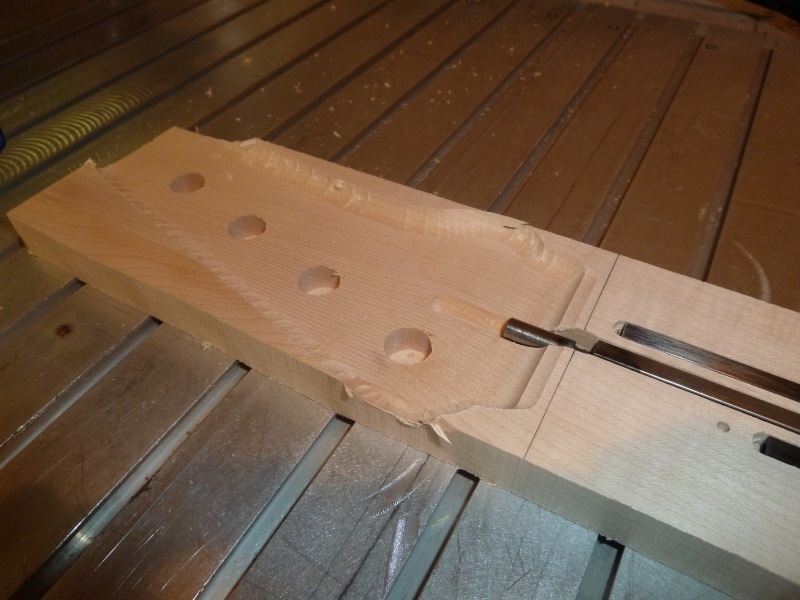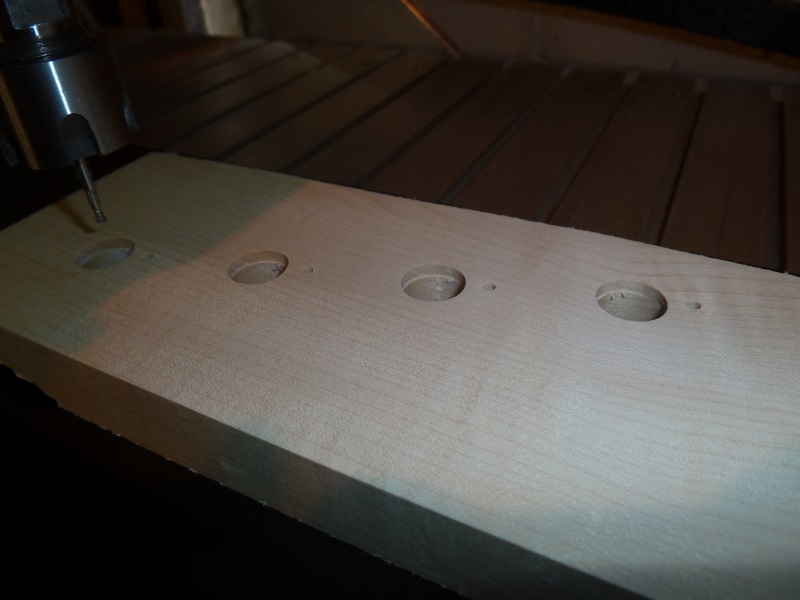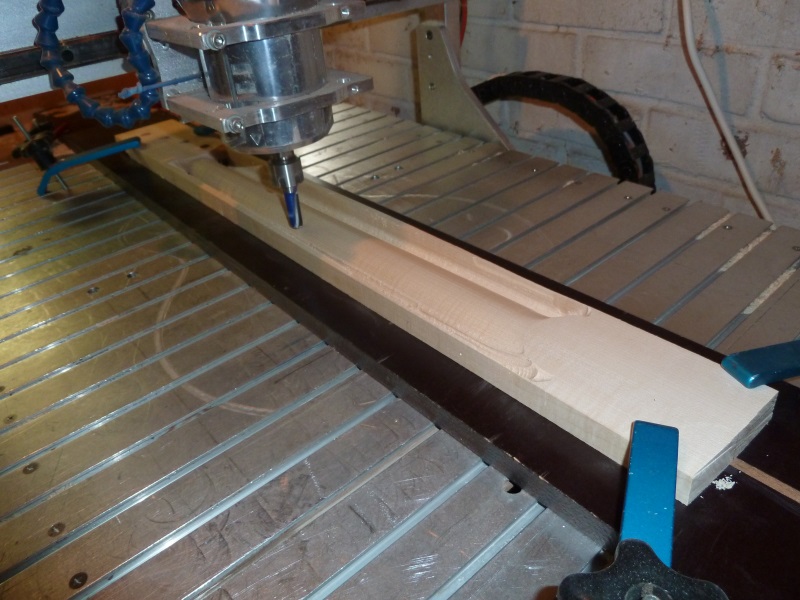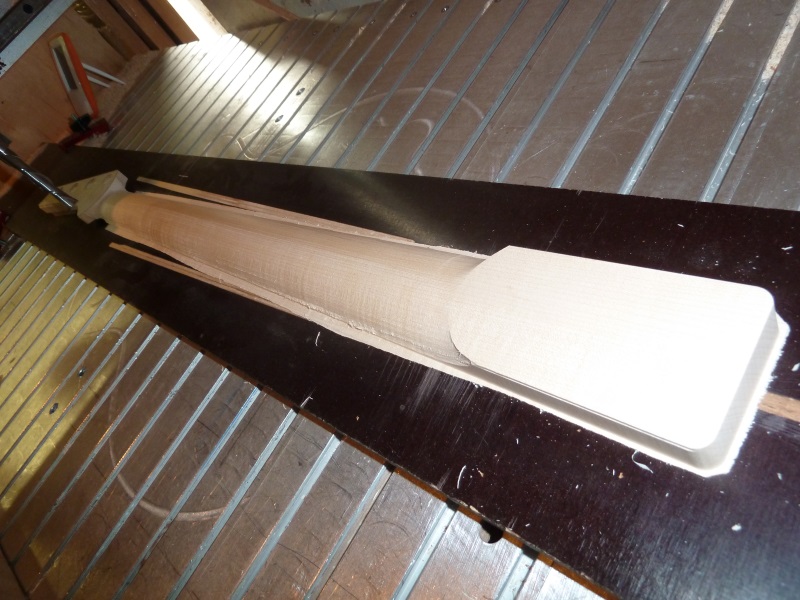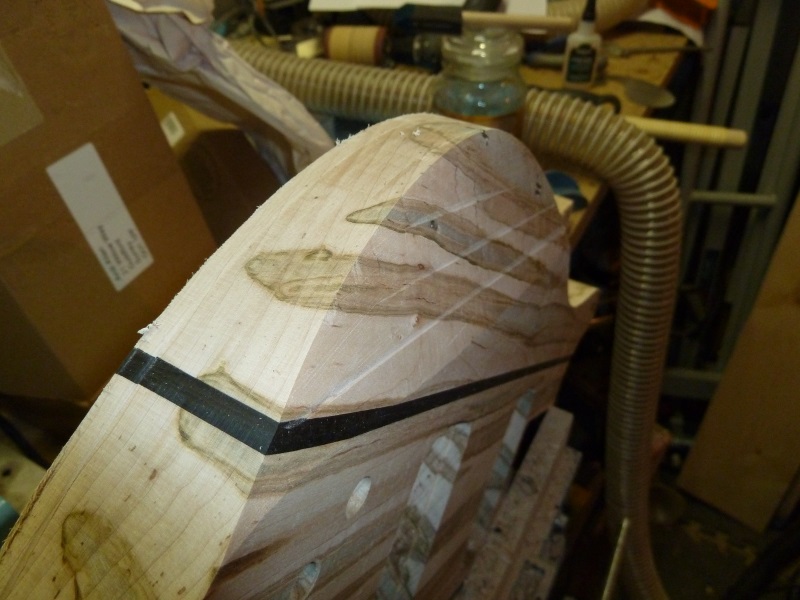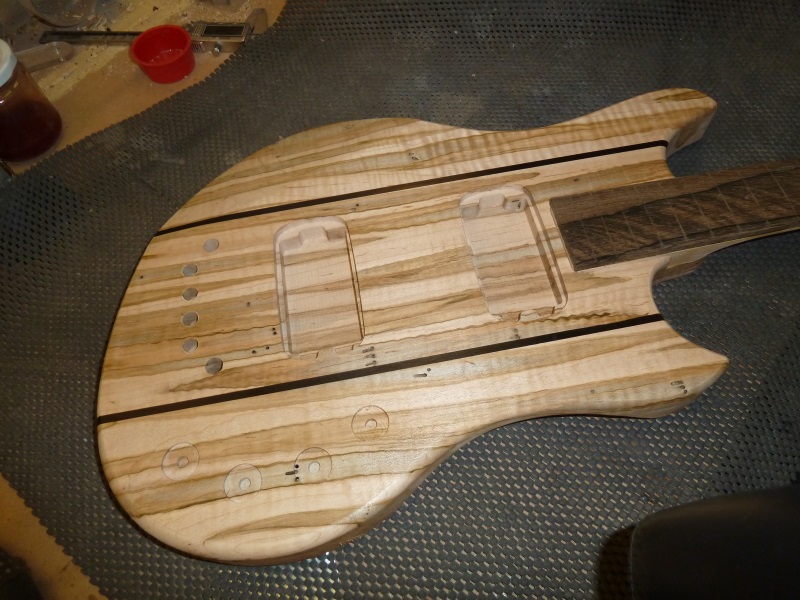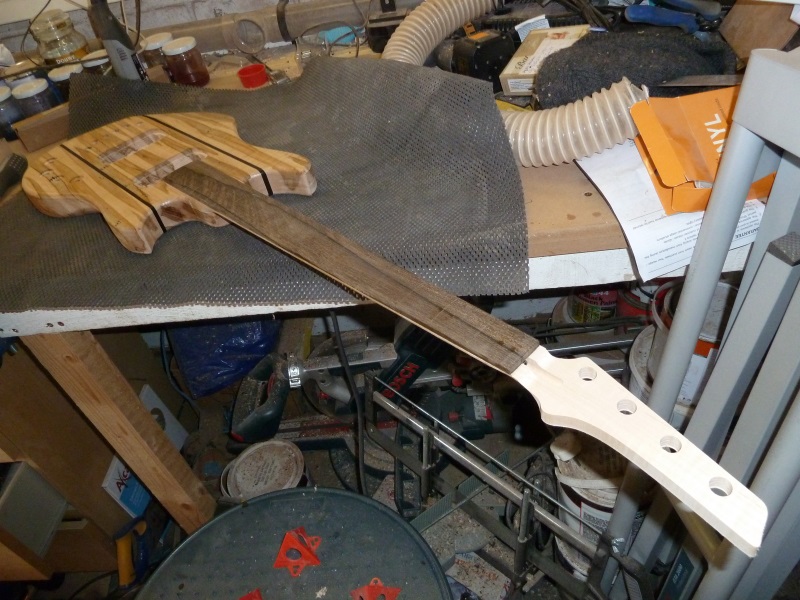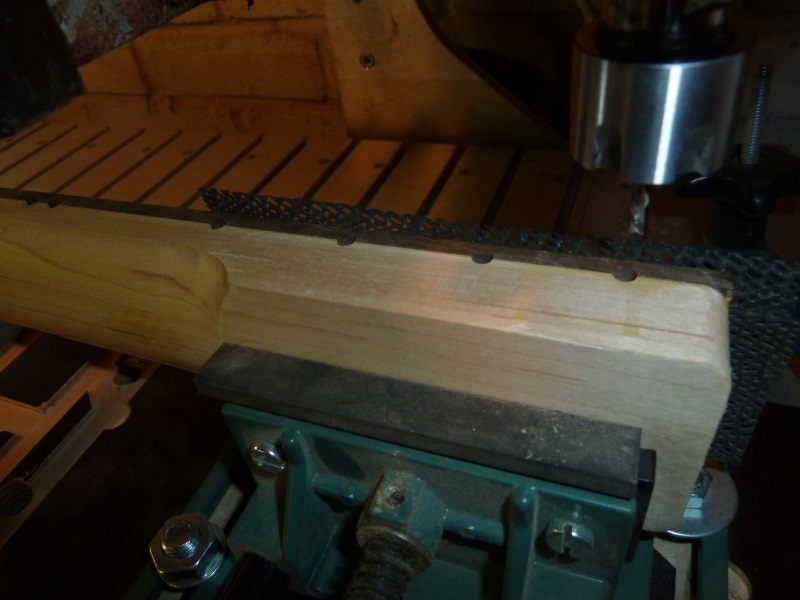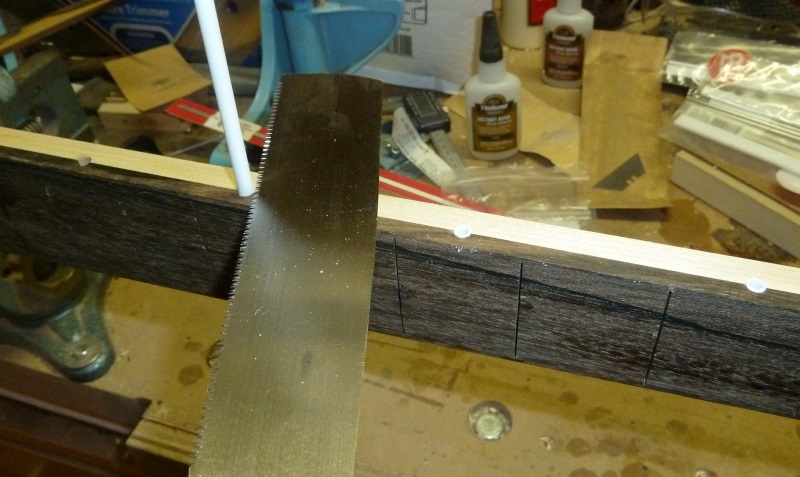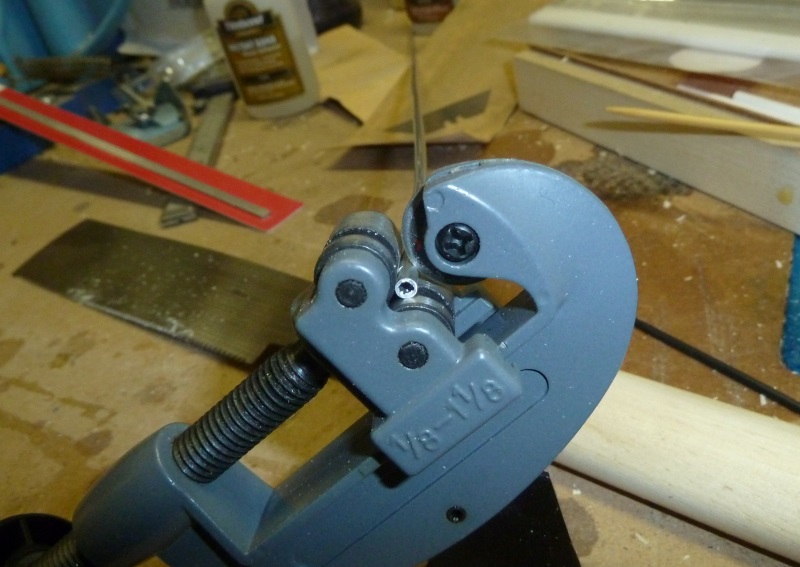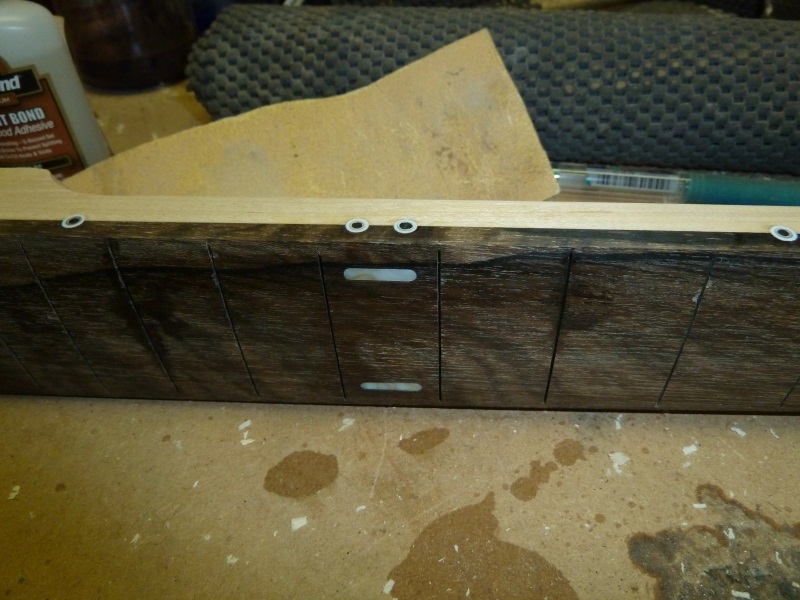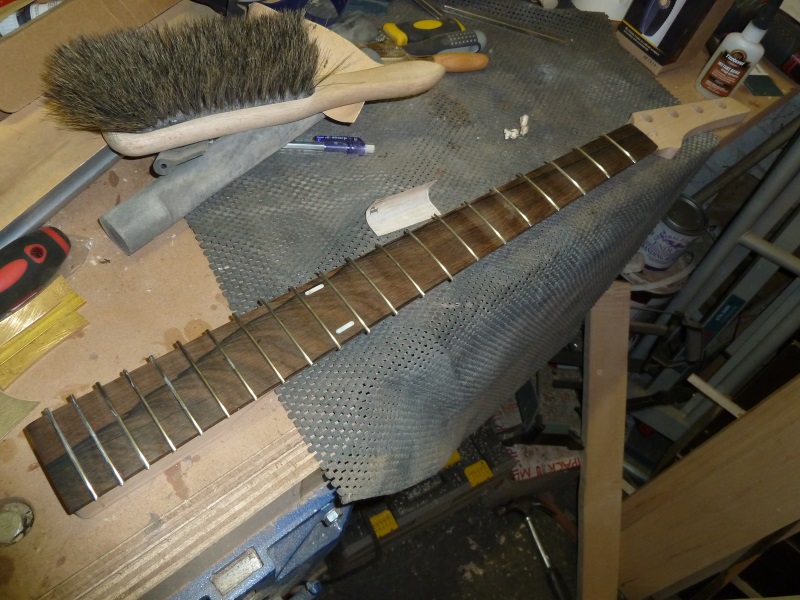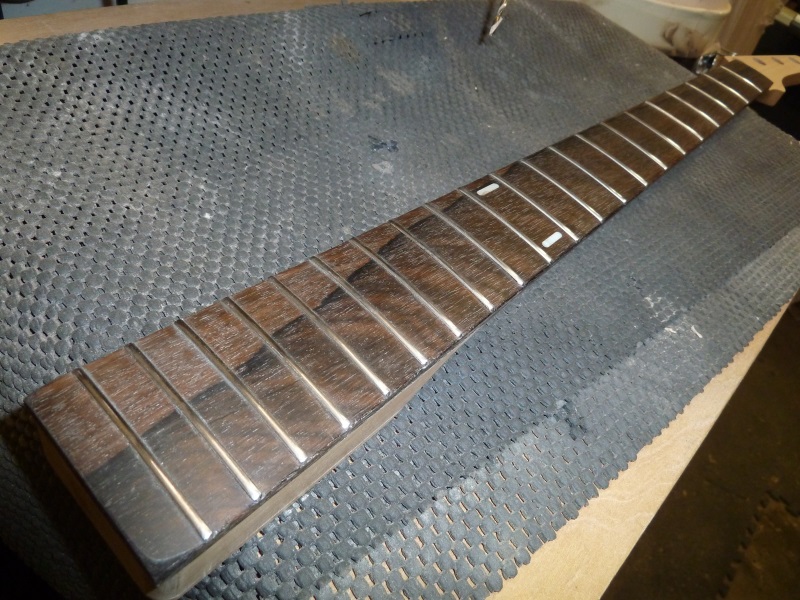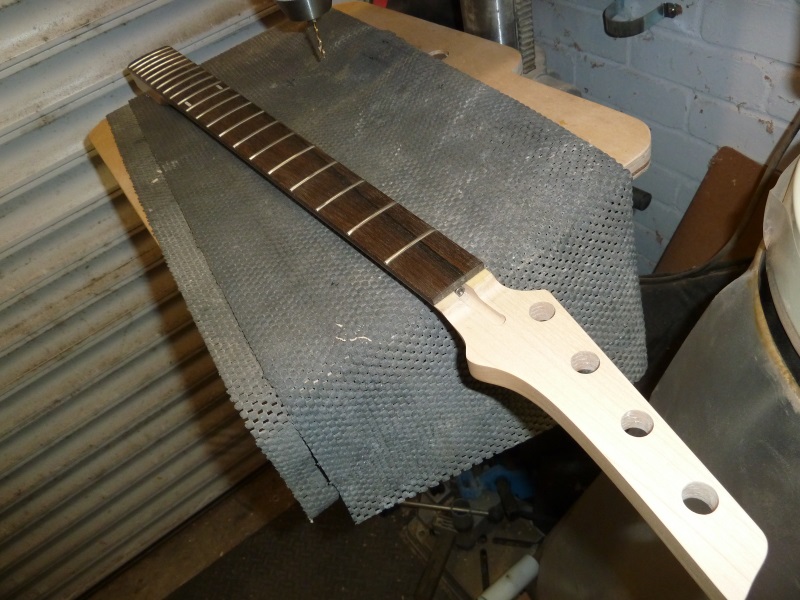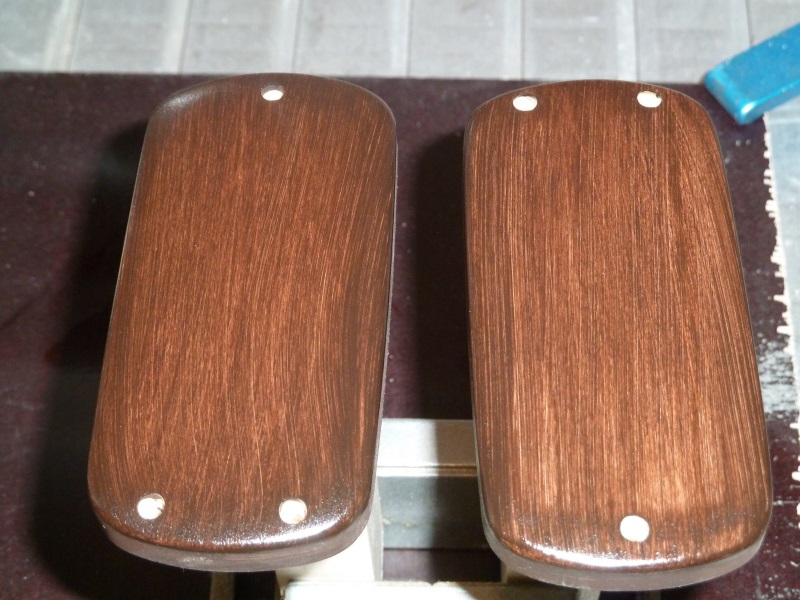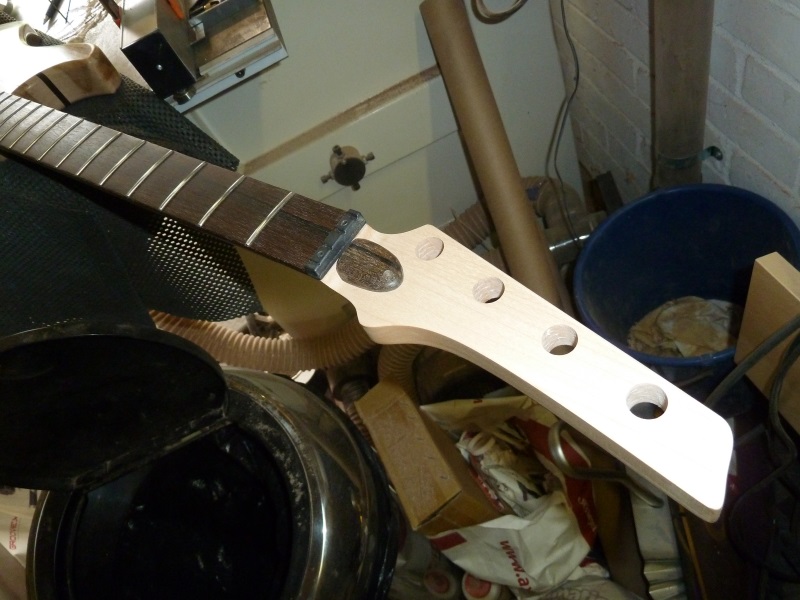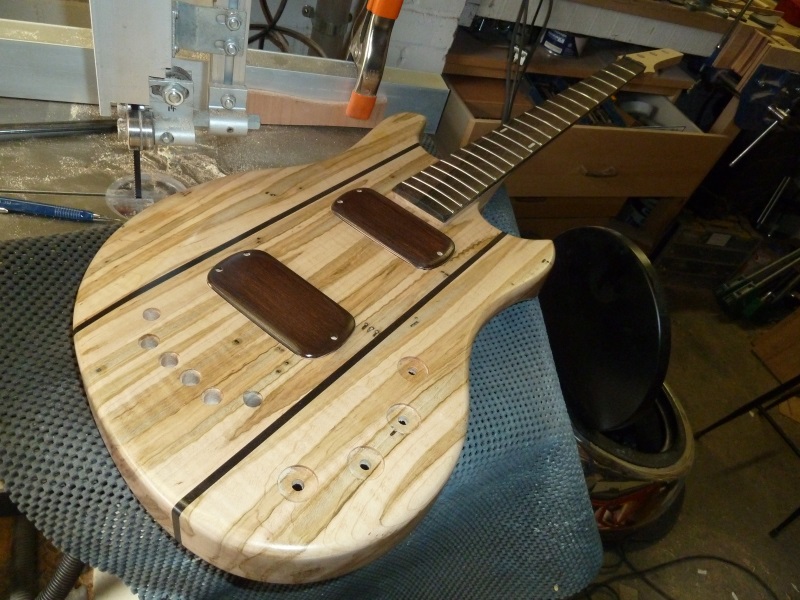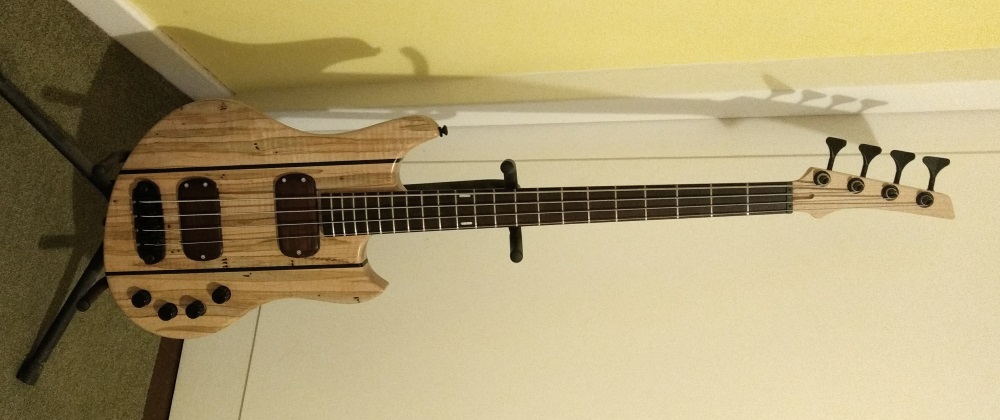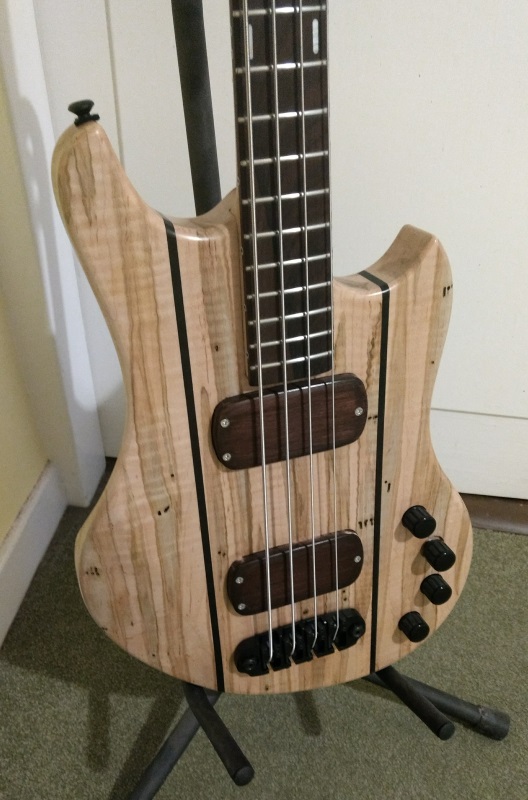Sporky McGuffin
Light entertainer
Hello! This is mostly cribbed from a build thread I did a few years and two workshops ago for the build section of a guitar forum, so it was written for a rather different audience and consequently there's probably all sorts of information missing. Feel free to ask. There's also nothing in here about the design process, but I'm happy to go through how I do that. This was made for me, I'd previously built half a dozen electric guitars but not gotten to the point where I felt they were good enough to sell.
I should also mention that this was done as a live update sort of thing - each day I'd do some work, each evening I'd post what I'd done that day.
Also prior warning that things go wrong and wood is sworn at and consigned to the firewood bin at various points.
Timber! I started by picking three bits out of this. Some iroko, some wenge and some maple.
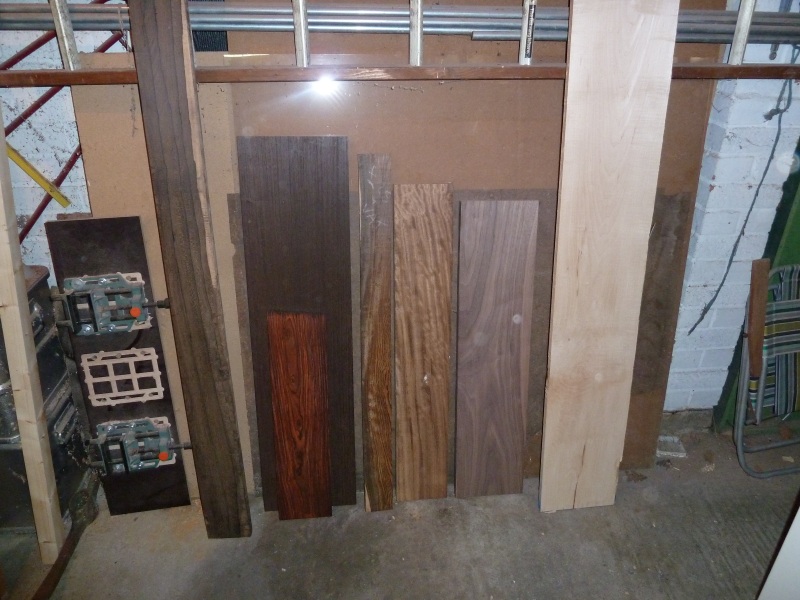
Then I applied this to the bits of wood:
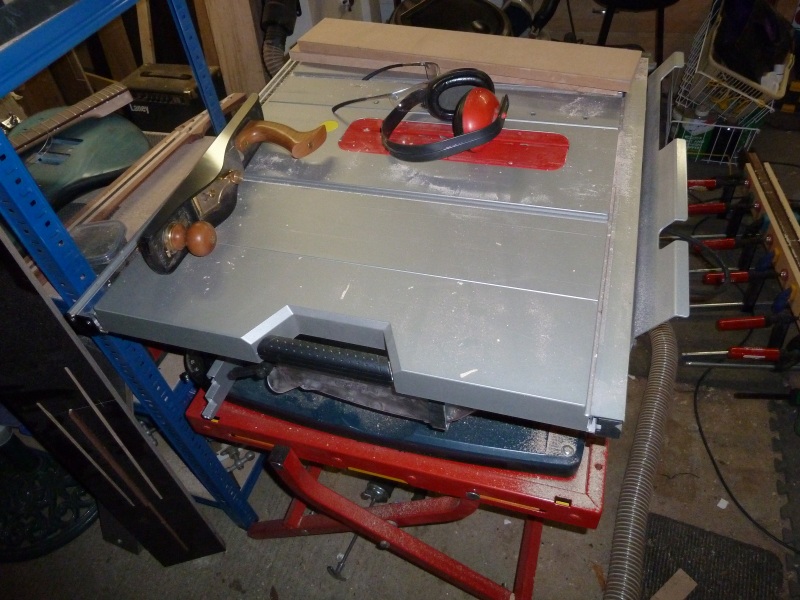
Then I applied this to the wenge:
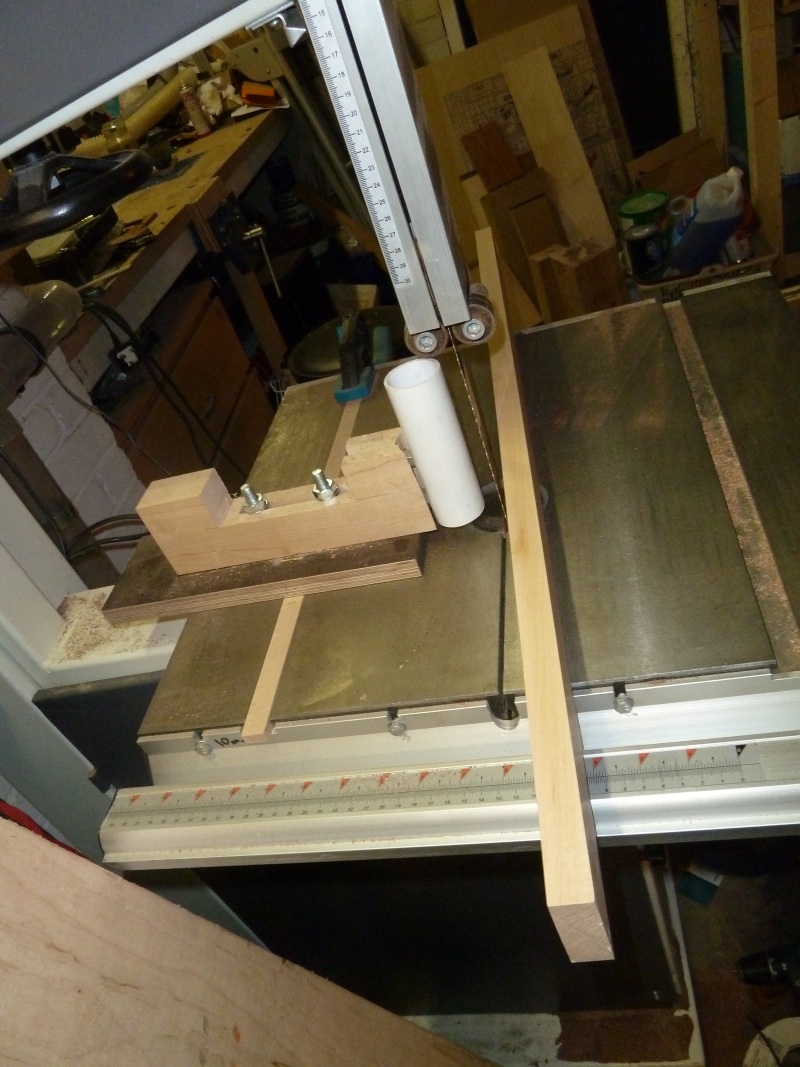
Then I applied this to all the bits:
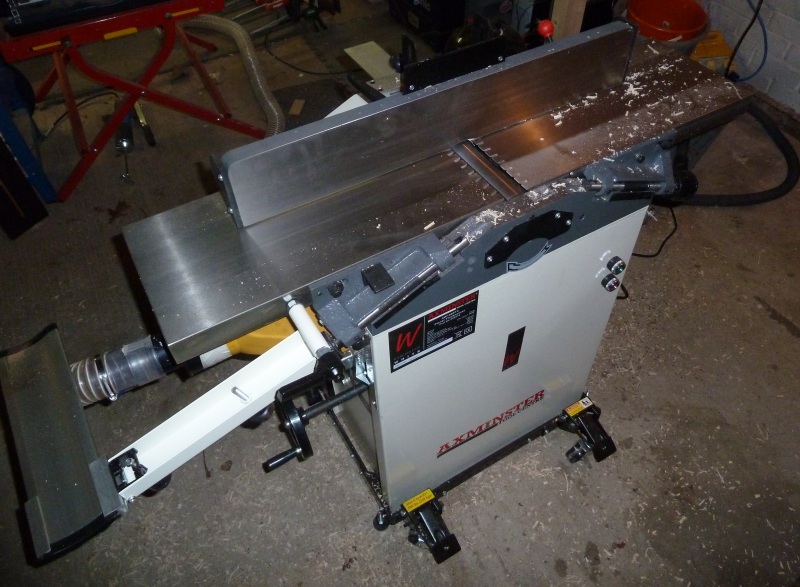
Then I glued the bits together and clamped them up like this:
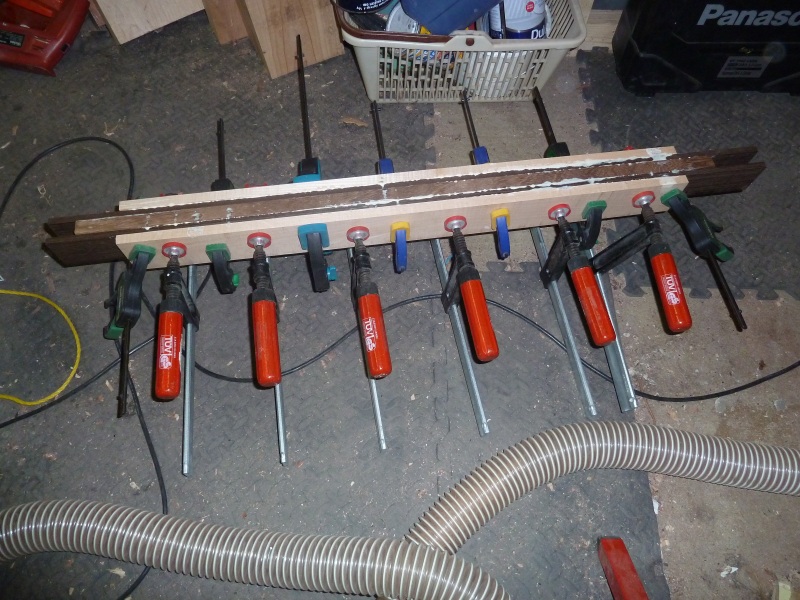
The next day I unclamped, trimmed using the tablesaw and then planed top and bottom on the CNC machine (just in manual mode):
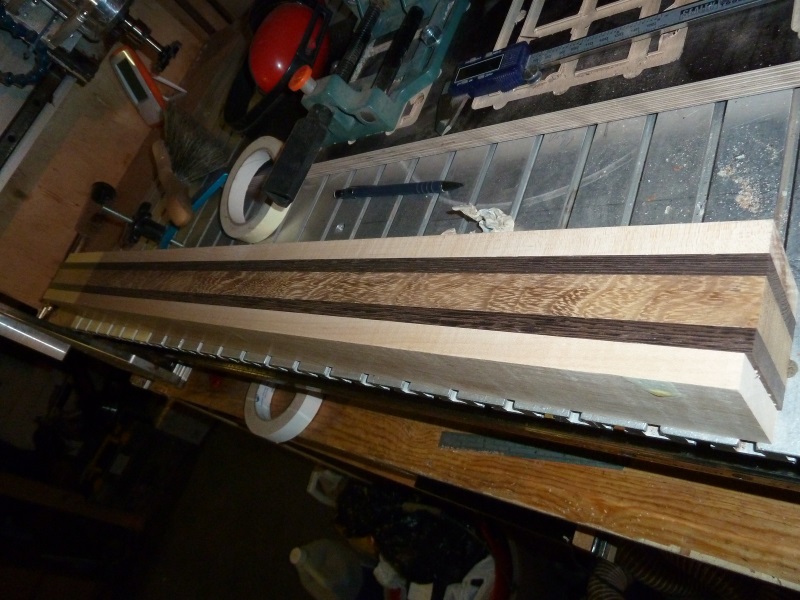
I should also mention that this was done as a live update sort of thing - each day I'd do some work, each evening I'd post what I'd done that day.
Also prior warning that things go wrong and wood is sworn at and consigned to the firewood bin at various points.
Timber! I started by picking three bits out of this. Some iroko, some wenge and some maple.

Then I applied this to the bits of wood:

Then I applied this to the wenge:

Then I applied this to all the bits:

Then I glued the bits together and clamped them up like this:

The next day I unclamped, trimmed using the tablesaw and then planed top and bottom on the CNC machine (just in manual mode):

Last edited:




